I had an opportunity to spend some time at MedKeeper headquarters in Westminster, CO last week. I’ve worked with MedKeeper before, but this was the first time I had the opportunity to visit the facility and meet their team.
MedKeeper is a company that makes several products for acute care pharmacy, specifically they develop software targeted at pharmacy operations. Some of you may know them for their medication tracking system, MedBoard.
Some of the other products in the Pharmacy Keeper suite include:
Carts – Crash cart and medication tray management
Tracking – Medication tracking and communications. Think next generation MedBoard
Activities – Sterile preparation and cleanroom QA and documentation.
Inspections – Medication area unit inspections
Verification – IV workflow management system
I’m currently interested in IV room technology and operations. Who knows what I’ll be interested in a few months from now, but at the moment it’s the IV room so my visit was mostly focused on Verification.
Verification, like several other applications in this space offers queue-based workflow management with bar code scanning and image-assisted volumetrics, i.e. Verification allows the users to take images to document the compounding process. The application also offers some other commonly seen functionality such as lot number and expiration date capture, a recipe database, and so on.
Where MedKeeper differentiates itself from other companies in this space is that all their new stuff, including Verification, is web-based, foregoing the concept of the desktop in favor of a more flexible, mobile approach. The user can literally use any web-enabled device to do their job, whether that’s a desktop, laptop, tablet, or smartphone running any OS.
Verification is lightweight, but very functional. Installation is quick and easy. Images and data are stored in “the cloudâ€. The application is designed to give users tremendous flexibility around how the software is used. Read that as workflow is defined and driven by the user, not the software.
I spent about half a day in a MedKeeper conference room putting Verification through its paces. The conference room was awesome. It was full of various clamps and mounting brackets, tablets, smartphones, other mobile devices, imagers, and so on. It was pretty cool. They’re obviously a Mac-centric shop, but I won’t hold that against them; they’ll eventually catch up <smile>. To their credit the new product ran well on every device I tried. I had Verification running on my Moto X, my ASUS VivoTab Note 8, an iPad Mini and an iPhone. No problems. I even ran through a use case where I started a sterile prep order on a MacBook Pro, moved to my Windows 8 ThinkPad to complete “compounding of the order”, and finished the order by performing a pharmacist verification on an iPhone. Very cool.
Here are some images of Verification running on my devices:

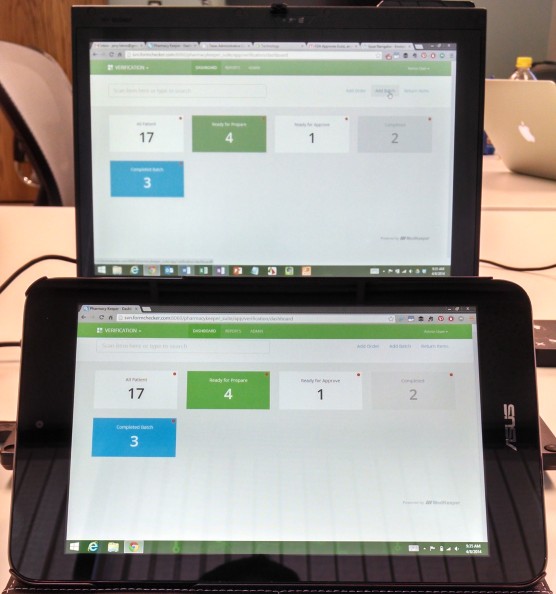
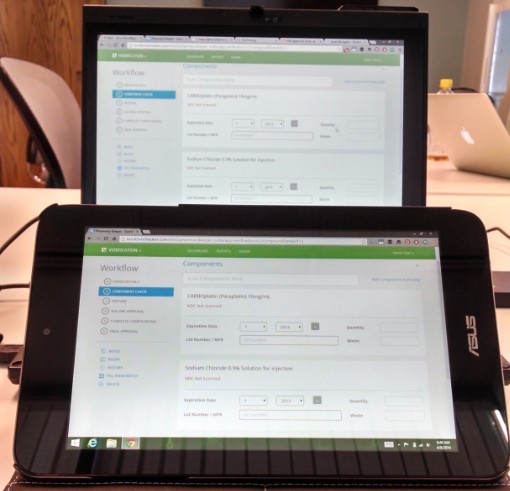
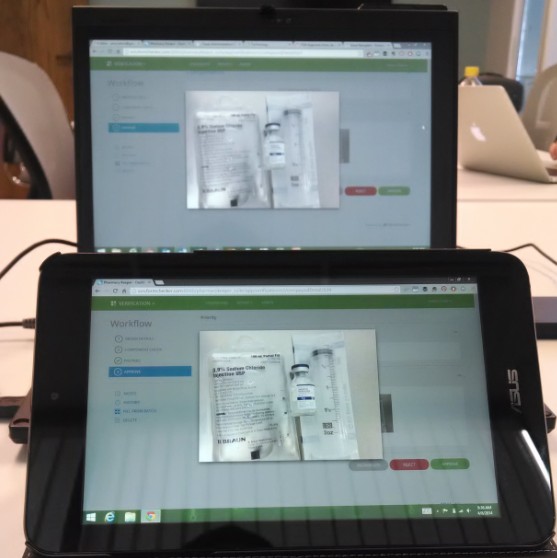

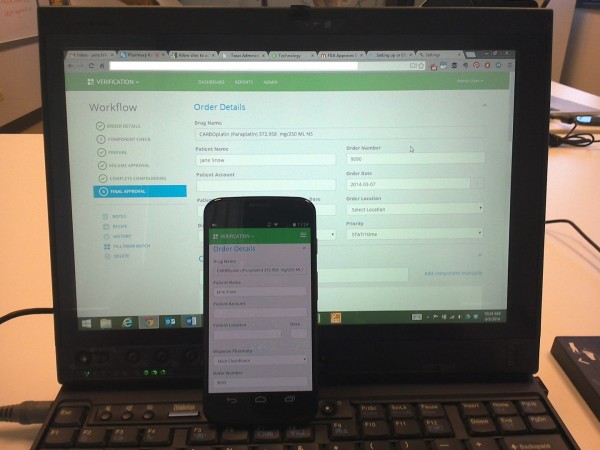
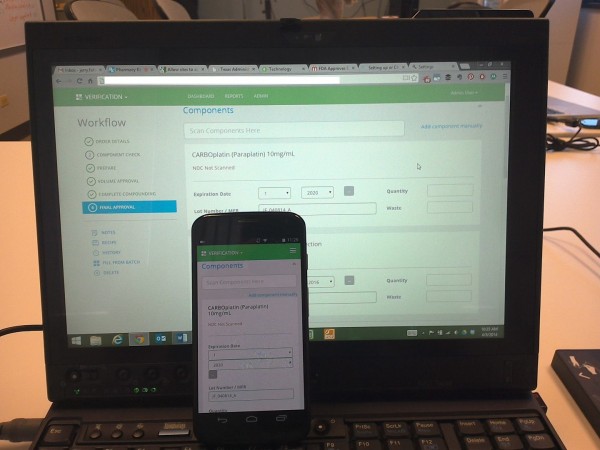
Leave a Reply